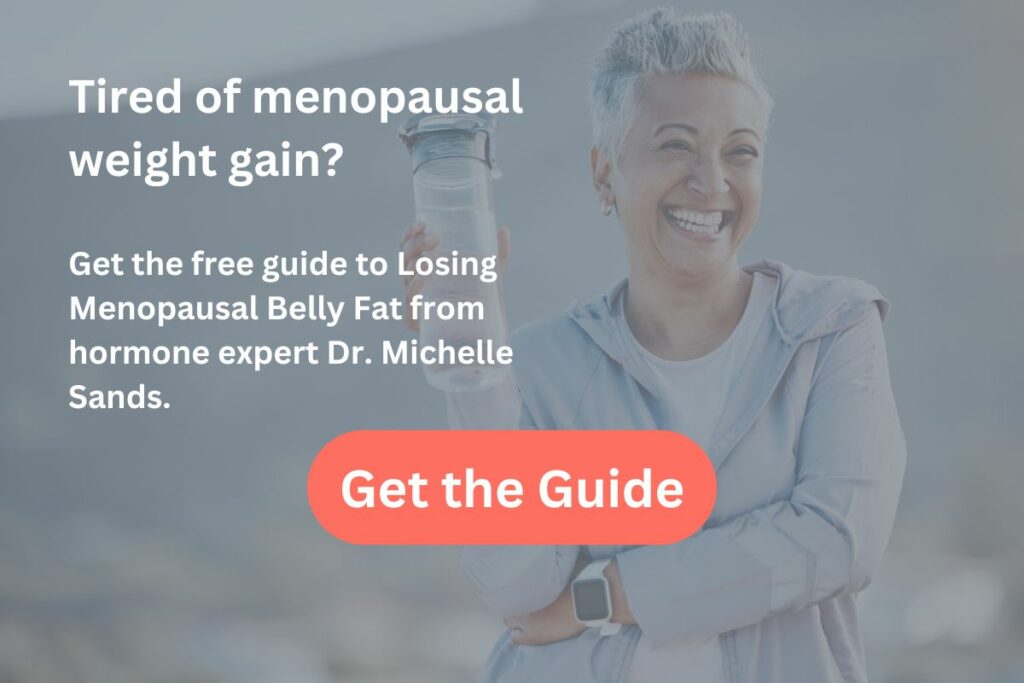Do you have menopause on your mind? If you’re in your late 30s or early 40s, menopause may not even be on your radar. Yet, without knowing the cause, you may already be experiencing some of the symptoms of perimenopause, the first phase of menopause. Symptoms like wild mood swings, trouble sleeping, unexplained weight gain, and night sweats are all associated with changing hormones.
From around your mid-thirties and up, your body is changing. Understanding the three distinct stages of menopause can help you pinpoint where you’re at in the menopause cycle, what to expect in terms of symptoms, and what you can do to ease them.
What is Perimenopause?
Perimenopause may be the stage of menopause you’ve never heard of. Perimenopause is the transition period into menopause, and it can last for several years before the onset of actual menopause. During perimenopause, you’re likely to still get your period, but it could be changing. During this cycle of menopause, your ovaries begin to produce less estrogen and progesterone, which can lead to irregular menstrual cycles.
This change of hormones can also lead to a host of physical, mental, and emotional symptoms, including:
- joint and muscle aches
- heavy sweating
- increased need to pee
- UTIs
- trouble sleeping
- vaginal dryness
- changes to your period
- headaches
- heart palpitations
- hair loss or thinning hair
- hot flashes or cold flashes
- night sweats
- decreased sexual desire
- mood changes/ mood swings
- brain fog
- forgetful
- depression
- irritability
- anxiety
The most common perimenopause symptoms include irregular periods and hot flashes.
- 80% of women experience irregular periods
- 75% of women experience hot flashes and night sweats
How Long Does Perimenopause Last?
The symptoms can feel severe, so you may be wondering: how long does perimenopause last? According to a study published in the Journal of Clinical Endocrinology & Metabolism, perimenopause can last an average of four years, but the length of this stage can vary significantly from woman to woman. Many women experience perimenopause and all of its symptoms for ten years.
How do you know when you’re done with perimenopause? Once you’ve gone 12 months without a period, you are officially entering the next stage: menopause.
This post may contain affiliate links, which provide a small commission to us when you purchase, at no additional cost to you. Thank you for helping to support our efforts in providing you the best, most up-to-date information for GloWell.
What is Menopause?
Menopause officially marks the end of the menstrual cycle. Technically, it is confirmed after a woman has not had a period for 12 consecutive months. For most women, menopause occurs around their early 50s; the average age of natural menopause in women in the United States is 51.
At this stage, your ovaries stop releasing eggs, and estrogen and progesterone production significantly decrease.
Menopause symptoms include:
- night sweats
- hot flashes
- depression
- anxiety or irritability
- mood swings
- insomnia
- fatigue
- dry skin
- vaginal dryness
- frequent urination
- Increased cholesterol levels
- Increased risk for heart disease
Important health risk: Estrogen levels play a crucial role in maintaining heart health, according to the American Heart Association, and the decline of estrogen during menopause may increase your risk of heart disease.
Postmenopause
After menopause, you’ll enter the postmenopausal stage, which lasts the rest of your life. Many women spend as much as one-third of their lives in the postmenopause stage, far longer than the time spent in perimenopause and menopause. It’s surprising that we don’t hear more about this stage.
During postmenopause, many of your perimenopause and menopausal symptoms subside or stabilize. Your hormones enter their new era: stable yet different from your menstruating years.
You’ll no longer experience PMS symptoms, hormonal headaches, or menstrual mood swings. Many women find improvements in sleep and memory and increased feelings of happiness. Pregnancy worries become a thing of the past. You may experience an end to menopause-related hair loss or hair thinning.
However, this stage of menopause also brings symptoms associated with reduced estrogen levels; 30% of postmenopausal women experience vaginal dryness and related discomfort.
And postmenopausal women can face an increased risk of osteoporosis.
What Can You Do About Menopause Symptoms?
Some of the symptoms of menopause and perimenopause can be significant. Beyond the physical changes to your body, the mental and emotional toll of mood swings and brain fog could be extremely challenging.
There are a few ways you can help manage these symptoms, including:
Hormone Replacement Therapy
Hormone replacement therapy is done under the supervision of a licensed medical professional. Hormone therapy helps replace estrogen and progesterone in your body (and may address changing testosterone, too). Hormone therapy can come in various forms, including topical creams, gels, patches, prescription pills, or vaginal suppositories.
Bioidentical hormone replacement therapy is a type of hormone therapy that utilizes hormones derived from natural sources, such as plants, instead of synthetic hormones. Whether you and your medical provider decide on synthetic hormones or bioidentical hormones, be sure you’re working with a licensed medical professional and understand the risks of each.
Jump start your efforts with one of the following free resources to regulating hormones during menopause from Dr. Michelle Sands, founder of Glow Natural Wellness: Hormone Harmony Over 35 book and 7 Day Me-NO-Pause Meal Plan
Natural Menopause Relief
Some women choose a natural path towards menopause relief, such as eating a menopause-friendly diet rich in phyto-estrogenic foods and making lifestyle changes such as getting more exercise and naturally promoting better sleep.
Whether you choose hormone replacement or natural solutions for menopause (or a combination of both), you don’t have to feel powerless during these three distinct transitional periods.
Maybe It’s Just Menopause…
From the time you hit your mid-thirties until the end of your life, you could be experiencing one of these three stages of menopause. That’s a significant amount of time to be affected by changing hormones and experiencing the symptoms that come along with that phase.
Your symptoms and menopausal experience can vastly differ from your sister’s, mother’s, or best friend’s. But there’s a very good chance that you’ll experience at least some of these symptoms. If you want help with symptoms, work with a licensed medical professional to help understand your hormone levels. You may choose to explore hormonal therapies to treat your symptoms or explore a natural path toward easing menopausal symptoms with food, lifestyle changes, and natural supplements.
Whatever you choose to do about it, the best way to conquer menopausal symptoms is with information, professional help, and a measure of grace and self-compassion.












Join the GloWell Community on Social!
Don't risk missing a single thing. Follow us on social and become part of the GloWell community.